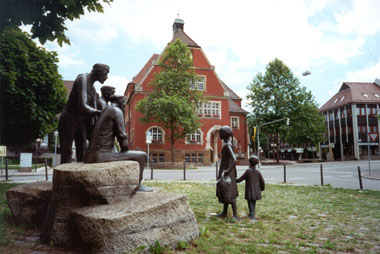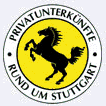
The first mention of Vaihingen dates back to the time around 1100 when it was property of the Duke of Calw. At the beginning of the 19th century, the site became part of the kingdom of Württemberg and counted 1300 inhabitants. In 1936 Vaihingen and Rohr joined. Since its suburbanisation, it is the largest district of Stuttgart in terms of area. Thanks to good connections to public transport, regional roads, the airport and the convenient infrastructure, Vaihingen is a popular residential, work and education area.
The rail track towards Horb, completed in 1879, and the Filderbahn made Vaihingen a traffic intersection on the Fildern and allowed rapid development in terms of trade and population. Many renowned firms settled here. After the Second World War, refugees from the Eastern areas, especially from Bukowina, and those who were displaced, created a new home for themselves in the district of Büsnau. In order to alleviate the housing shortage at the end of the 50s, the district of Dürrelwang was built. The change from a trade and industry location to a service provision site was the most obvious transformation in the past years. This was helped by the fact that the University of Stuttgart had been developing the campus Pfaffenwald since 1957. The Institute der Fraunhofer Gesellschaft, the Max-Planck-Gesellschaft, the Deutsche Zentrum für Luft- und Raumfahrt, the Hochschule Druck und Medien and the Bildungszentrum der Telekom later joined the area. Vaihingen today is the education district within the federal capital, which has positive effects on the work place situation. The fast development in the Stuttgarter Engineering Park (StEP) proves this. On the 1st October 1936, Vaihingen and Rohr merged. Both communities were suburbanised on the 1st April 1942. Private links about Vaihingen.






